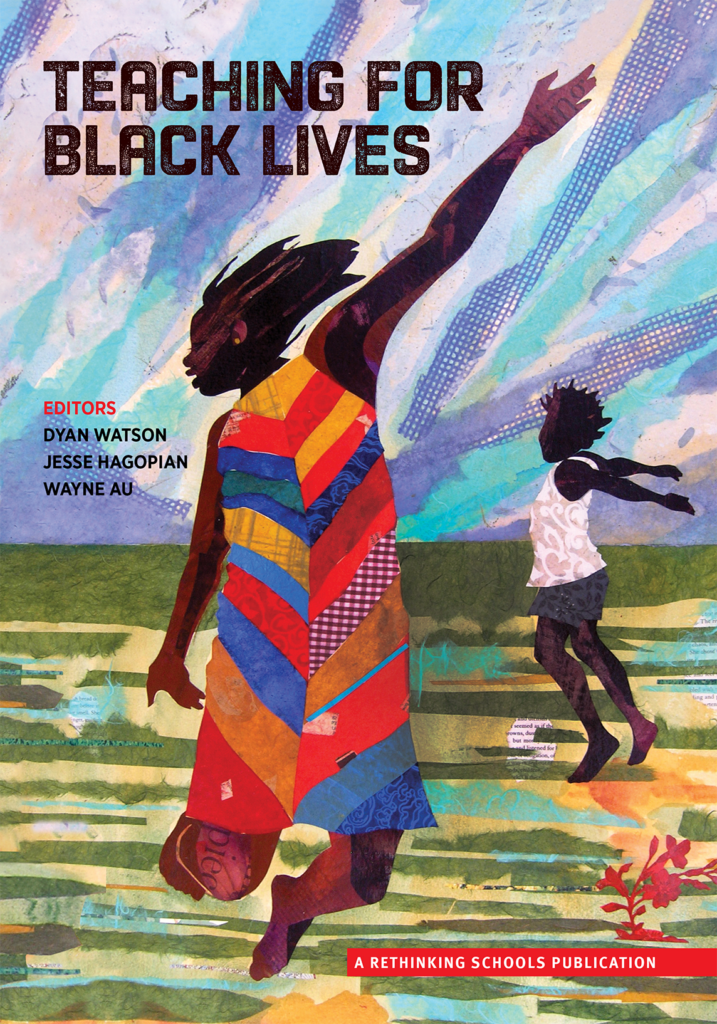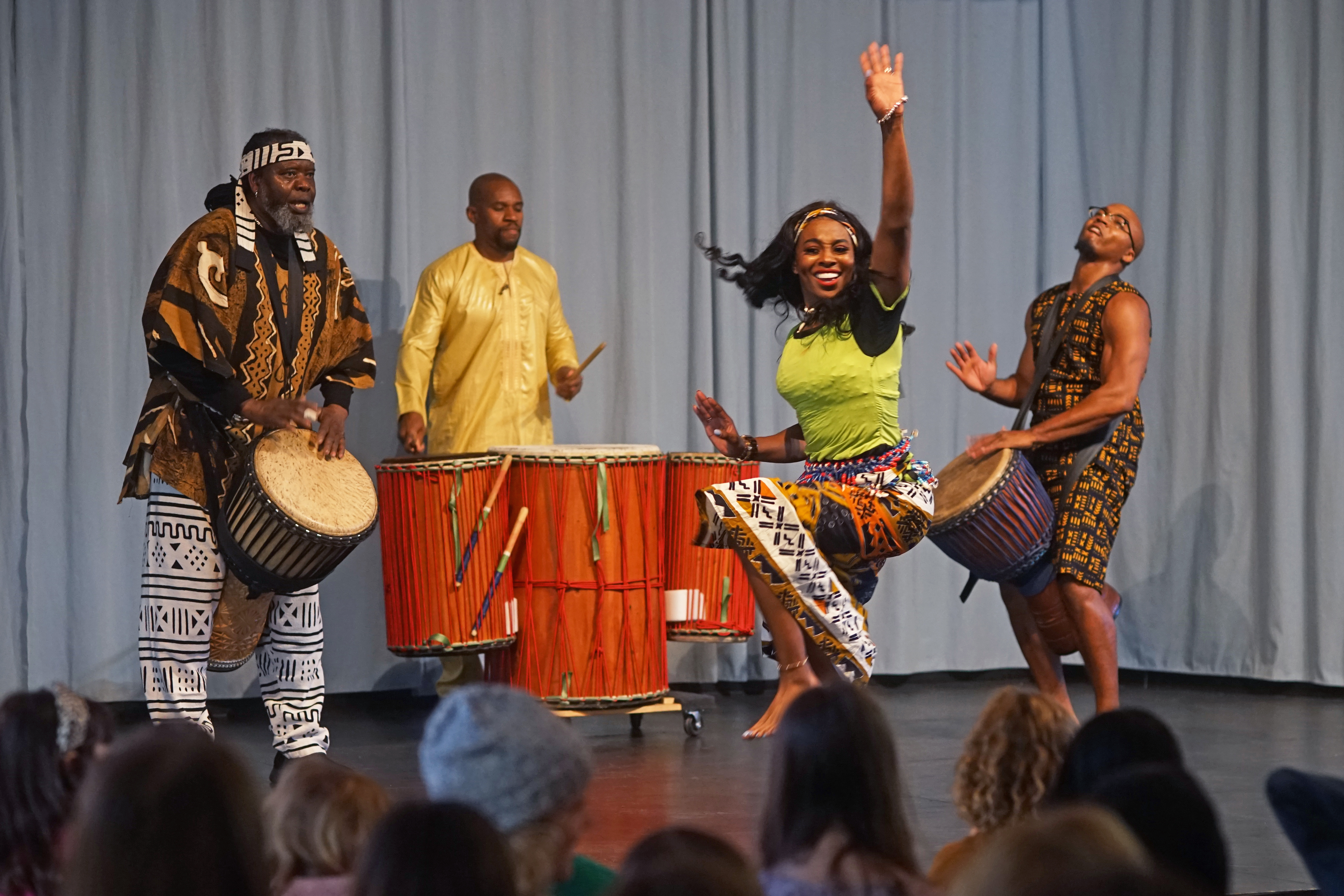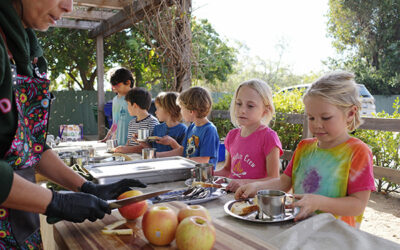Honoring Our Teachers' Commitment to Equity:
Insights from the Teaching for Black Lives Training
At the Waldorf School of San Diego, we are committed to fostering a learning environment that is inclusive, equitable, and responsive to the diverse needs of our students and families. This commitment was deepened last summer when three of our dedicated teachers attended the Teaching for Black Lives professional development course with the Great Lakes Waldorf Institute. This transformative experience provided them with tools and insights to make our classrooms more just, inclusive, and culturally responsive.
A Transformative Experience
At the Waldorf School of San Diego, we are deeply committed to nurturing an educational space that embraces diversity and equity. Our mission is to ensure that every student feels valued and empowered to succeed. Through continuous professional development and curriculum enhancements, we strive to reflect the rich cultural tapestry of our community and foster a sense of belonging for all.
Key Elements of the Training
Centering Black Joy
The training focuses on celebrating the richness of Black culture, shifting narratives from oppression to joy, celebrating the richness of Black culture and contributions in history, literature, and the arts and integrating these perspectives into the curriculum.
Deconstructing Master Narratives
The training encourages educators to question traditional historical perspectives and include diverse voices that have been marginalized.
Navigating Resistance
The training equips teachers with strategies to address the challenges of pushback against inclusive teaching and equipping educators with strategies to sustain this important work.
Reflections from Our Educators
Ms. Gomes’ Insight
The name of the workshop I attended this past July immediately caught my attention: Teaching for Black Lives in Waldorf Schools. It was the first time I had seen a Waldorf training so explicit in its language—truly acknowledging this critical need. While I was intrigued, I approached it with a degree of skepticism. Over the years, I’ve participated in many classes on inclusivity and diversity, both within and beyond the Waldorf sphere. Would this one be different?
The answer was a resounding yes. What unfolded over the course of the week was nothing short of inspiring. The organizers and presenters were incredibly thorough, weaving every aspect of our work into the discussions and activities. I left the workshop feeling not only hopeful but also deeply committed to the idea that this kind of training should be a fundamental part of every Waldorf Teacher Training curriculum. Of course, in an ideal world, we wouldn’t need such workshops—but until we reach that point, I am grateful for the growing recognition that they are essential.
I wish all of my colleagues had the opportunity to experience what I did, though I’m grateful that at least a few were able to join. Since this was the inaugural offering of the course, it brought together class teachers, subject teachers, administrators, and leaders from Waldorf schools across the country. I plan to follow up with the organizers to ensure I know when it will be offered again—because more of our school community needs to engage with this work.
Even though the workshop took place on Zoom, it still held the artistic and immersive quality so characteristic of Waldorf education. We spoke beautiful verses by Langston Hughes and bell hooks. We sang together each day, even learning an original composition by a teacher from the Emerson Waldorf School in North Carolina. Our colored pencils found their way onto the many pages of notes we took, infusing our learning with creativity and color.
The stories we heard—both pedagogical and personal—were at once beautiful and heart-wrenching. We were given practical teaching methods and resources, tools to bring back to our colleagues, and a broader perspective on what we consider Waldorf curriculum and why. We stood among people who, like us, are drawn to the magic and genius of Steiner’s vision of developmentally appropriate, spiritually enriching education—yet we also took a clear-eyed look at the areas where Waldorf has fallen short. The workshop created a space for us to face these shortcomings with love and honesty so that we, as educators, can model the practice of striving to do better.
As I bring this work back to WSSD, I’m particularly excited about the ways in which it will inform my role as Grades Chair. I look forward to discussing with my colleagues how we approach block rotations, stories, and songs—what we define as curriculum and why. Is our curriculum still meeting the needs of our students, or has it become stagnant? Is it living, breathing, and evolving, or has it become dogma? These are essential questions for any educator committed to staying fresh and relevant. If something is truly valuable, it will withstand deeper scrutiny.
In my Games and Movement classes, I have always sought to bring in activities from a variety of cultures, acknowledging their origins and significance. When the budget allows, I invite specialists to provide authentic perspectives. When it doesn’t, I make it clear to my students that I am sharing something outside of my lived experience—something I find meaningful and wish to pass on in the most respectful way possible. With older students, we engage in conversations about the history of sports and the systemic barriers that have excluded women and people of color. I listen to their perspectives, helping them connect these discussions to the world around them while guiding them toward a deeper understanding of equity.
This workshop reaffirmed the importance of this work. It was, indeed, good medicine—and I am committed to ensuring that more of our school community has the opportunity to experience it in the future.
Ms. Quintero's Insight
Celebrating Black Joy and Experience in the Classroom: A Journey from Training to Action
As educators, one of the most impactful steps we can take is creating an inclusive and vibrant learning environment that celebrates all cultures, experiences, and histories. I was drawn to the Waldorf curriculum precisely because it emphasizes celebrating cultures across humanity, fostering a rich understanding of the world’s diverse people and traditions. Recently, I had the privilege of participating in a transformative training, Teaching for Black Lives in Waldorf Schools. This training focused on centering Black joy, deconstructing traditional narratives, and providing strategies to navigate resistance in inclusive education.
The focus of the training was clear and empowering: it encouraged educators to shift the narrative from oppression to joy. It emphasized the importance of celebrating the richness of Black culture through history, literature, and the arts. As a teacher, this approach inspired me to think deeply about how I could incorporate and celebrate Black experiences not only within the curriculum but also during school festivals and events.
One of the most beautiful moments where this vision came to life was during our recent Martin Luther King Jr. assembly. This year, a colleagues – HS Coach Anthony Thomas and Second Grade Teacher, Ms. Saint John – invited African drummers and dancers to perform, bringing an authentic and joyous celebration of Black culture to the heart of our school. The energy in the room was palpable. I watched in awe as the children’s faces lit up, their hands clapping joyously to the rhythm of the drums. Some even said it was the best music they had ever heard. Seeing their excitement and connection to the performance was a powerful reminder of the impact this kind of cultural engagement can have on young minds. The MLK assembly was a beautiful reflection of how we can use art and celebration to amplify voices that have been historically marginalized, inspiring a deeper understanding and respect for diversity within the school community.
The training also emphasized the importance of questioning traditional historical perspectives and integrating diverse voices that have often been excluded from mainstream narratives. As a result, I’ve worked to integrate African culture more deeply into our classroom experience. This is an ongoing process to ensure that our curriculum reflects a broader, more inclusive range of experiences that evolve with the needs of the students. In first grade, we can celebrate Black joy and experience through African fairy tales. These stories, rich with adventure and moral lessons, offer an opportunity to explore the beauty of African storytelling traditions while expanding students’ understanding of different cultures. These tales help children connect to universal themes of courage, kindness, perseverance, and the importance of community, while also appreciating the unique perspectives.
Additionally, the training equipped us with strategies to handle resistance—something that many educators face when introducing more inclusive practices. With these tools, I feel more confident in my ability to continue this important work and help others on the same journey. It’s not just about representation through music and dance, or appearances of African culture in the curriculum through stories. It’s about creating a space where Black experiences and joy are at the forefront, allowing students to engage with these experiences in a meaningful and positive way.
As educators, our work doesn’t stop at creating diverse curricula; it extends to how we build community, uplift voices, and celebrate the full breadth of human experience. The joy and enthusiasm I witnessed in the students during the performance were a testament to the power of representation and the beauty of cultural celebration.
I look forward to continuing to build on this momentum, to find new ways to bring Black experiences into our school community, and ensuring that these celebrations are not just one-time events, but an integral part of our everyday learning.
Ms. Martinez's Insight
The T4BL in Waldorf schools was like a college seminar. All of the presenters were well-spoken and well-informed. I especially appreciated how they shared their personal experiences in objective ways that brought to light these topics in such a deep and meaningful way.
I thought the book was incredibly helpful as a resource and I will definitely refer back to it for reminders of why it is important to bring black joy into my classroom.
One of the major takeaways of this work is the opportunity to look deeply into how two people can live very different lives solely based on the color of their skin. One of the presenters gave a statistic that it is 6 times harder for a person of color to be at the same table career-wise as a white person, and after getting there they are more likely to have health issues than a white person.
The term affinity groups was new to me, and how it is necessary for black people to share and talk with each other safely. “Black people need their own spaces. We need places in which we can gather and be free from the mainstream stereotypes and marginalization that permeate every other societal space we occupy.” – Kelsey Blackwell, Affinity groups apply to any group that is typically marginalized.
I’ve already applied some ideas from this workshop in my classroom. Waldorf schools generally don’t implement the use of black crayons until the older grades but the use of black and other skin tone colors helps children of color feel represented. When it is appropriate and aligns to the curriculum I have taken the opportunity to highlight stories about people of color.
“Black joy” was the theme of the week’s courses and this phrase echoes through my mind whenever I cross paths with black people in my daily journey. The color of our skin creates two very separate realities. As a human race our focus needs to shift towards lifting each other up, creating joy, and acknowledging the hardships others have had to face along the way. The evolution of humanity will only come when we have left no one behind.
”It is right, it should be so;
Man was made for joy and woe;
Thro’ the world we safely go.
Joy and woe are woven fine,
A clothing for the soul divine.
Under every grief and pine
Runs a joy with silken twine.”
By William Blake
Continuing Our Commitment
Ongoing Efforts for Equity
Inspired by their experience, these teachers are leading discussions within our faculty on how to continue implementing the principles of the Teaching for Black Lives course. Through curriculum adjustments, classroom discussions, and ongoing professional development, we are taking steps to ensure that Waldorf education remains a place of social renewal and transformation.
We are grateful for their commitment to this work and look forward to seeing its impact on our school community.
The Audit Working Group and The Belonging Circle are working on compiling a list additional workshops and trainings for faculty and staff.





0 Comments